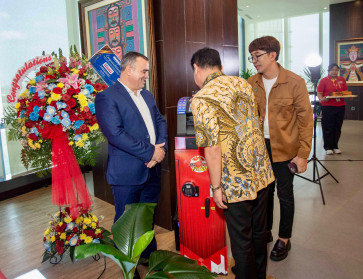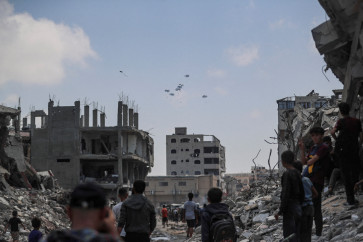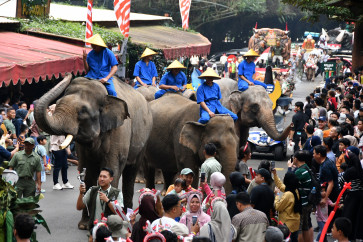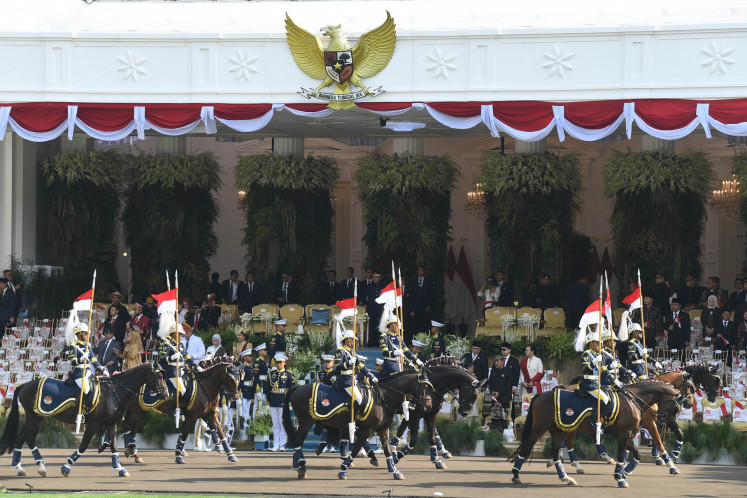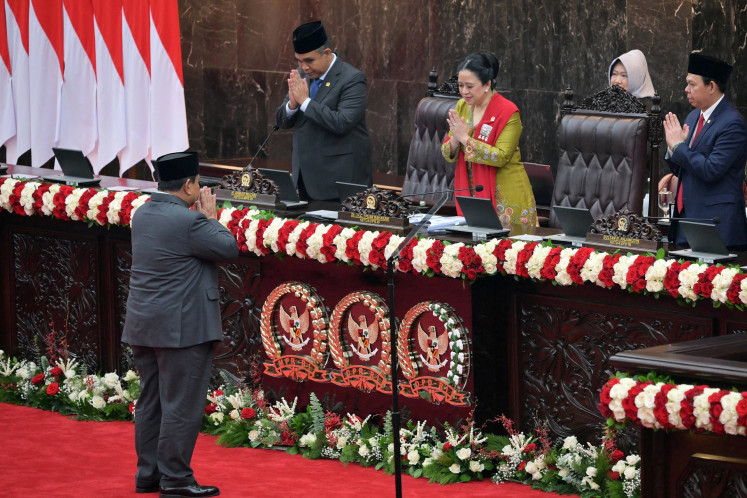Popular Reads
Top Results
Can't find what you're looking for?
View all search resultsPopular Reads
Top Results
Can't find what you're looking for?
View all search resultsAir France 1933-2003: Sky-high fashion
With uniforms coming straight from the hands of fashion maestros such Christian Dior and Christian Lacroix, Air France flight attendants are ensured of a fashionably chic and elegant look
Change text size
Gift Premium Articles
to Anyone
W
ith uniforms coming straight from the hands of fashion maestros such Christian Dior and Christian Lacroix, Air France flight attendants are ensured of a fashionably chic and elegant look.
The airline, celebrating its 80th anniversary this year, shared a glimpse of the evolution of the uniforms of its flight attendants from 1933 to 2013 during a recent fashion show in Jakarta.
It all began at the end of the 1920s, when airlines transformed their aircraft into snack bars and high-class restaurants to attract passengers.
Two models opened the show in two versions of the first Air France barmen’s uniforms, which were produced in 1933, when the airline had stewards and not stewardesses.
The first barmen’s uniform was comprised of a white jacket with a high collar, navy trousers and a white cap, which was later replaced by navy-blue double-breasted jackets worn over white shirts with wing collars and bow ties, also with navy blue trousers and caps.
In 1946, Air France recruited its first air hostesses, mainly from the French army and the Red Cross. Their uniforms, designed by the Georgette Rénal fashion house in 1946, had a heavy military influence marked by the Occupation era.
The suit was made of dark blue wool twill and was worn with a white poplin blouse, featuring long jackets with rounded tails and skirts with wide front pleats and felt berets decorated with a winged seahorse, the airline’s symbol, embroidered in silver thread. Hostesses were, Red Cross style.
In 1948, Air France was transformed into a national company. The change of status was accompanied by a desire to streamline the uniforms. Badges highlighted hierarchical differences with military accents.
The new tailoring was wool serge and kept approximately the same cut as in 1946, with tails shortened, changing to a navy blue tone.
In the early 1950s, Air France inaugurated tourist flights to New York and the new Orly airport replaced Le Bourget. In line with these changes, Georgette de Trèze introduced a more modern, feminine suit for the air hostesses, reflecting the iconic figure-hugging feminine style of the fifties.
The suit jacket came in at the waist, enhancing the hourglass figure imagined by Christian Dior. It was worn with a white poplin blouse with round collar that had to always be closed.
Showcasing a summer dress by Maison Virginie, which was produced in 1955, a model wore the basic Air France uniform with a clear tropical essence and a matching beret. The light blue tergal fabric of the shirt and dress met the need for washable, lightweight clothing suitable for hot countries at a time when air conditioning did not yet exist.
In the early 1960s, the first jet airplanes appeared with the introduction of the Boeing 707 and the Caravelle into the Air France fleet. Uniforms were adapted to no longer interfere with body movement, without sacrificing elegance and sophistication.
It was the famous house of haute couture designer Christian Dior that took up the challenge. Dior’s summer dress was in elegant light blue color, worn with a flat-tie belt.
Two versions of Cristobal Balenciaga’s couture uniform were made, summer and winter, in 1969. The pink summer version was part of the fashion show; the winter version that was only available in navy blue went unseen.
Along with the Balenciaga’s uniforms, Air France also provided accessories such as a handbags, classic navy blue shoes and white cotton gloves to match the outfits for the first time.
The 1970s generation saw an awareness that uniforms went hand in hand with a loss of identity and freedom. Air France thus expanded its uniform options in 1978 so that employees could choose from a number of styles.
The first “multiform uniform” was created by House of Carven in 1978 with tropical dresses in sky blue and pink.
The collection comprised a short-sleeve shirt and a knee-length skirt, adorned with several pleats on the front.
Nine years later, Louis Feraud introduced a summer dress in cotton-polyester, animated by a lavaliere and a satin pouch, striped navy blue, pink and straw. The “nurse” aspect in Feraud’s creation recalls visions of the traditional role of a hostess.
The second new piece was a spring and autumn Fregate dress by one of top French fashion houses, Carven, in 1987.
The Fregate dress was worn for almost 20 years, and was one of the favorite dresses of Air France flight attendants until the new Christian Lacroix uniform was introduced in 2005.
Air France chose Lacroix to develop a large-scale project that elegantly translated the spirit of the airline into reality.
Lacroix attempted to create more than 100 pieces available for mix and match, in creating a collection of Air France’s wardrobe. Hence, the collection is more than just a wardrobe.
The Lacroix’s collection maintains its navy blue color with grey blue — the color of the sky — adding a point of sweetness, and red appears only in touches such as in gloves and belt.
Air France is still using the Lacroix 200 design until the present day.


